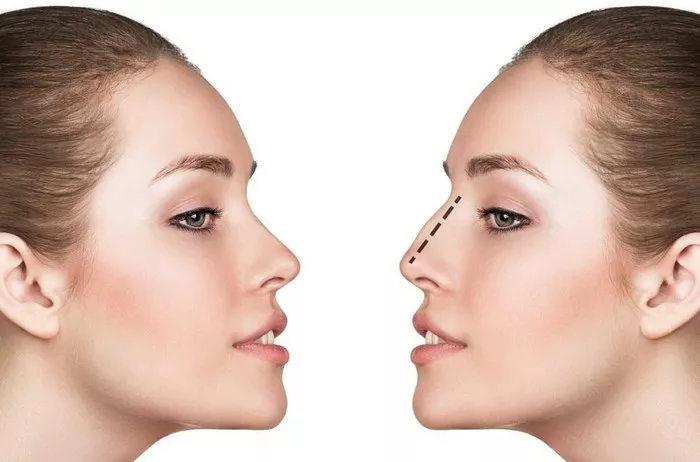Uneven nostrils can be a source of self-consciousness and discomfort for many individuals. Various factors contribute to nostril asymmetry, including congenital conditions, trauma, or prior surgical procedures. Thankfully, modern rhinoplasty techniques offer multiple solutions to address this issue. This article explores 8 professional methods to repair uneven nostrils, detailing the procedures, benefits, and potential outcomes.
1. Closed Rhinoplasty
Minimally Invasive Approach
Closed rhinoplasty, also known as endonasal rhinoplasty, is a minimally invasive technique where incisions are made inside the nostrils. This method avoids external scars and offers a faster recovery time.
Ideal Candidates
Patients with mild to moderate asymmetry are ideal candidates for closed rhinoplasty. This technique is suitable for individuals seeking subtle adjustments without extensive structural changes.
Procedure Details
Surgeons carefully reshape the cartilage and bone through internal incisions, ensuring precise adjustments to achieve symmetrical nostrils. The procedure typically takes 1-2 hours, and patients can expect a recovery period of 1-2 weeks.
2. Open Rhinoplasty
Comprehensive Access
Open rhinoplasty involves making an incision across the columella (the tissue between the nostrils), providing the surgeon with comprehensive access to the nasal structures. This technique allows for more extensive modifications and is ideal for complex cases.
Addressing Severe Asymmetry
Patients with significant nostril asymmetry, structural deformities, or previous unsuccessful surgeries can benefit from open rhinoplasty. This approach enables precise correction of intricate issues.
Surgical Process
The procedure usually lasts 2-3 hours. Surgeons lift the nasal skin to expose the underlying structures, allowing detailed reshaping of cartilage and bone. The recovery period is typically 2-3 weeks, with full results visible within a year.
See Also: 7 Reasons to Have a Secondary Rhinoplasty
3. Septoplasty
Correcting Nasal Septum Deviation
Septoplasty focuses on correcting a deviated septum, which often contributes to nostril asymmetry. By straightening the septum, the nostrils can achieve a more balanced appearance.
Indications for Septoplasty
Patients experiencing breathing difficulties or nasal obstruction due to a deviated septum are prime candidates. This functional procedure also enhances aesthetic symmetry.
Surgical Technique
The surgery involves repositioning or removing the deviated portions of the septum through internal incisions. It generally takes 1-2 hours, with a recovery period of 1-2 weeks.
4. Alar Base Reduction
Narrowing Wide Nostrils
Alar base reduction, or alarplasty, addresses wide or flared nostrils by removing small wedges of tissue at the base of the nostrils. This technique effectively narrows and balances nostril size.
Suitable Candidates
Individuals with wide nostrils that cause asymmetry are ideal candidates for alar base reduction. This procedure is often combined with other rhinoplasty techniques for optimal results.
Procedure Overview
The surgery typically takes 1 hour. Surgeons make incisions at the base of the nostrils, excise excess tissue, and meticulously suture the area to achieve a symmetrical appearance. Recovery usually lasts 1-2 weeks.
5. Cartilage Grafting
Enhancing Structural Support
Cartilage grafting involves using the patient’s cartilage (commonly from the septum, ear, or rib) to reinforce or reshape the nasal structure. This technique is beneficial for correcting nostril asymmetry due to cartilage deficiencies.
Indications for Cartilage Grafting
Patients with weak or collapsed nostrils, or those who have undergone previous surgeries resulting in asymmetry, can benefit from cartilage grafting. This method provides long-lasting structural support.
Surgical Process
The procedure duration varies based on the complexity of the grafting required. Surgeons harvest cartilage, sculpt it to the desired shape, and place it to achieve symmetry. Recovery time is typically 1-2 weeks.
6. Nostril Suspension Sutures
Non-Surgical Option
Nostril suspension sutures offer a non-surgical approach to correct mild nostril asymmetry. This technique involves using sutures to lift and reposition the nostrils, enhancing symmetry.
Ideal Candidates
Individuals with minor asymmetry or those seeking a temporary solution may opt for nostril suspension sutures. This method is less invasive and requires minimal downtime.
Procedure Details
The procedure takes about 30 minutes to 1 hour. Surgeons place sutures strategically to lift and adjust the nostrils. The results can last several months, with a short recovery period of a few days.
7. Dermal Fillers
Temporary Correction
Dermal fillers provide a non-surgical, temporary solution for nostril asymmetry. Hyaluronic acid-based fillers can add volume and contour to achieve a more balanced appearance.
Suitable Candidates
Patients with minor asymmetry or those unwilling to undergo surgery can benefit from dermal fillers. This approach is ideal for individuals seeking quick, reversible results.
Injection Process
The procedure takes 15-30 minutes. Surgeons inject fillers into specific areas to enhance symmetry. Results are immediate, with minimal downtime and potential touch-ups required every 6-12 months.
8. Revision Rhinoplasty
Correcting Previous Surgeries
Revision rhinoplasty addresses asymmetry resulting from prior rhinoplasty procedures. This complex surgery requires a skilled surgeon to correct issues and restore balance.
Indications for Revision
Patients dissatisfied with the results of a previous rhinoplasty or those experiencing functional issues can opt for revision rhinoplasty. This procedure is tailored to address specific concerns and improve overall symmetry.
Surgical Approach
The surgery duration varies depending on the complexity. Surgeons carefully evaluate the nasal structures and use various techniques, such as grafting or reshaping, to achieve the desired outcome. Recovery time is typically longer, often 3-4 weeks.
Conclusion
Repairing uneven nostrils requires a personalized approach tailored to each patient’s unique needs. Whether through surgical or non-surgical methods, the goal is to achieve a balanced and harmonious appearance that enhances both aesthetics and function. Consulting with an experienced rhinoplasty surgeon is crucial to determine the most appropriate method for addressing nostril asymmetry. With advanced techniques and skilled professionals, individuals can achieve the desired results and regain confidence in their appearance.
Related topics:

